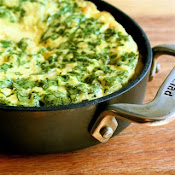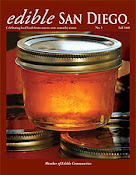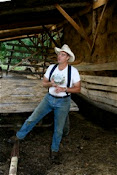 Last Saturday morning, while warming up with a cup of coffee and some sweets in an adorable cafe in Boulder, my mother offered me her latest theory: "The prettier a cookie is," she said, setting down a handsome palmier, making no effort to hide her disgust, "the less edible it becomes." Though the palmier may have been an unlucky pick that morning, I think Liza might be on to something.
Last Saturday morning, while warming up with a cup of coffee and some sweets in an adorable cafe in Boulder, my mother offered me her latest theory: "The prettier a cookie is," she said, setting down a handsome palmier, making no effort to hide her disgust, "the less edible it becomes." Though the palmier may have been an unlucky pick that morning, I think Liza might be on to something. I had been eyeing this Dorie Greenspan recipe for linzer cookies for weeks. And after reading last Wednesday's New York Times' article, "Butter Holds The Secret To Cookies That Sing," I felt primed for an all-star baking session in my all-but-neglected kitchen. I would follow the recipe to a T, and with my recently acquired butter knowledge, I would think science not just mechanics.
I would cream my 65-degree temperature butter — "cold to the touch but warm enough to spread" — for at least three minutes with the paddle attachment of my stand mixer set on medium speed — no higher, lest the butter's temperature rise to 68 degrees — until enough air bubbles formed to create the required texture and aeration to produce a cookie to rival all cookies. My adrenaline was pumping. It was game time. I laced my apron around my waist, pounded a quart of Gatorade and set to work, not veering ever so slightly from the recipe, fighting off laziness every step of the way.
I whipped. I chilled. I rolled. I baked. I baked again. I dusted. I jammed. I sandwiched. I admired.
Expectations were high. Perhaps too high. After assembling all of the linzers, I ate one. And then another. And then another. I kept tasting, hoping with each new bite, I would be overwhelmed with satisfaction and joy, which I could then take to my computer and report to all of you. But alas, it never came.
I can't quite pinpoint my disappointment. These cookies are not too sweet, which I like, but I find them a bit too dry, which I don't. The final sandwich, I felt, needed more jam to combat the dryness, but the nature of the cookie only allows so much jam to exist between the two layers before a mess oozes out the sides. I offered one of my creations to a four-year-old boy who promptly spit it out. His six- and eight-year-old siblings ate theirs happily, with smiles even, but I think at that age, they've already learned tact.
I can say with certainty these are the prettiest cookies ever to emerge from my kitchen. Truly. I only wish I could say they were the tastiest, too.

 As the above tale reveals, I am not totally satisfied with this recipe. Several years ago I made a batch of linzer cookies for Valentine's Day, which I prefer to this recipe. It has a higher butter content, which I think adds to the flavor. The cookies are not as pretty, but if taste is what you are after, I think you might have better success with this recipe.
As the above tale reveals, I am not totally satisfied with this recipe. Several years ago I made a batch of linzer cookies for Valentine's Day, which I prefer to this recipe. It has a higher butter content, which I think adds to the flavor. The cookies are not as pretty, but if taste is what you are after, I think you might have better success with this recipe.
I can say with certainty these are the prettiest cookies ever to emerge from my kitchen. Truly. I only wish I could say they were the tastiest, too.

 As the above tale reveals, I am not totally satisfied with this recipe. Several years ago I made a batch of linzer cookies for Valentine's Day, which I prefer to this recipe. It has a higher butter content, which I think adds to the flavor. The cookies are not as pretty, but if taste is what you are after, I think you might have better success with this recipe.
As the above tale reveals, I am not totally satisfied with this recipe. Several years ago I made a batch of linzer cookies for Valentine's Day, which I prefer to this recipe. It has a higher butter content, which I think adds to the flavor. The cookies are not as pretty, but if taste is what you are after, I think you might have better success with this recipe. Linzer Sablés
Adapted From Dorie Greenspan's Baking: From My Home To Yours
1½ cups finely ground almonds, hazelnuts or walnuts
1½ cups all-purpose flour
1½ teaspoons ground cinnamon
¼ teaspoon salt
Scant ¼ teaspoon ground cloves (optional — I did not use any cloves)
1 large egg
2 teaspoons water
1 stick (8 tablespoons) unsalted butter, at room temperature
½ cup sugar
½ cup raspberry jam (or any jam you like) plus 1 teaspoon of water (optional)
Confectioners' sugar, for dusting
1. Whisk together the ground nuts, flour, cinnamon, cloves (if using) and salt. Using a fork, stir the egg and water together in a small bowl.
2. Working with a stand mixer, fitted with a paddle attachment, beat the butter and sugar together at medium speed until smooth, about 3 minutes, scraping down the bowl as needed. Add the egg mixture and beat for 1 minute more.
3. Reduce the speed to low and add the dry ingredients, mixing only until incorporated. Don't overmix. If the dough comes together while some dry crumbs remain in the bottom of the bowl, stop the mixer and finish blending the ingredients with a rubber spatula or your hands.
4. Divide the dough in half. Working with one half at a time, put the dough between two large sheets of wax paper or plastic wrap.(*See note) Using your hands, flatten the dough into a disk, then grab a rolling pin and roll out the dough, turning it over frequently so that the paper doesn't cut into it, until it is about ¼-inch thick. Leave the dough in the paper and repeat with the second piece of dough. Transfer the wrapped dough to a baking sheet or cutting board (to keep it flat) and refrigerate or freeze it until it is very firm, about 2 hours in the refrigerator or about 45 minutes in the freezer.
Note: I divided the dough into two pieces, chilled it overnight, then rolled it out the next day. It was a little tricky rolling out the dough the next day because it was so cold, but I made it happen. I chilled the cut cookies on the pans for about 15 minutes before baking.
Adapted From Dorie Greenspan's Baking: From My Home To Yours
1½ cups finely ground almonds, hazelnuts or walnuts
1½ cups all-purpose flour
1½ teaspoons ground cinnamon
¼ teaspoon salt
Scant ¼ teaspoon ground cloves (optional — I did not use any cloves)
1 large egg
2 teaspoons water
1 stick (8 tablespoons) unsalted butter, at room temperature
½ cup sugar
½ cup raspberry jam (or any jam you like) plus 1 teaspoon of water (optional)
Confectioners' sugar, for dusting
1. Whisk together the ground nuts, flour, cinnamon, cloves (if using) and salt. Using a fork, stir the egg and water together in a small bowl.
2. Working with a stand mixer, fitted with a paddle attachment, beat the butter and sugar together at medium speed until smooth, about 3 minutes, scraping down the bowl as needed. Add the egg mixture and beat for 1 minute more.
3. Reduce the speed to low and add the dry ingredients, mixing only until incorporated. Don't overmix. If the dough comes together while some dry crumbs remain in the bottom of the bowl, stop the mixer and finish blending the ingredients with a rubber spatula or your hands.
4. Divide the dough in half. Working with one half at a time, put the dough between two large sheets of wax paper or plastic wrap.(*See note) Using your hands, flatten the dough into a disk, then grab a rolling pin and roll out the dough, turning it over frequently so that the paper doesn't cut into it, until it is about ¼-inch thick. Leave the dough in the paper and repeat with the second piece of dough. Transfer the wrapped dough to a baking sheet or cutting board (to keep it flat) and refrigerate or freeze it until it is very firm, about 2 hours in the refrigerator or about 45 minutes in the freezer.
Note: I divided the dough into two pieces, chilled it overnight, then rolled it out the next day. It was a little tricky rolling out the dough the next day because it was so cold, but I made it happen. I chilled the cut cookies on the pans for about 15 minutes before baking.
Note: The rolled-out dough can be wrapped airtight and stored in the refrigerator for up to 3 days or in the freezer for up to 2 months. Just thaw the dough enough to cut out the cookies and go on from there.
When ready to bake:
When ready to bake:
1. Center a rack in the oven and preheat the oven to 375 ºF. Line two baking sheets with parchment or silicone mats.
2. Peel off the top sheet of wax paper from one piece of dough and, using a 2-inch round cookie cutter — a scalloped cutter is nice for these — cut out as many cookies as you can. If you want to have a peekaboo cutout, use a small fluted cutter or the end of a piping tip to cut out a circle (or heart or whatever shape you have) from the centers of half of the cookies. Transfer the rounds to the baking sheets, leaving a little space between the cookies. Set the scraps aside — you can combine them with the scraps from the second disk and roll and cut more cookies.
3. Bake the cookies one sheet at a time for 11 to 13 minutes, or until the cookies are lightly golden, dry and just firm to the touch. Transfer the cookies to a rack to cool to room temperature. Repeat with the second disk of dough, making sure to cool the baking sheets between batches. Gather the scraps of dough together, press them into a disk, roll them between sheets of wax paper or plastic wrap and refrigerate until firm, then cut and bake.
Preparing the sandwich cookies:
2. Peel off the top sheet of wax paper from one piece of dough and, using a 2-inch round cookie cutter — a scalloped cutter is nice for these — cut out as many cookies as you can. If you want to have a peekaboo cutout, use a small fluted cutter or the end of a piping tip to cut out a circle (or heart or whatever shape you have) from the centers of half of the cookies. Transfer the rounds to the baking sheets, leaving a little space between the cookies. Set the scraps aside — you can combine them with the scraps from the second disk and roll and cut more cookies.
3. Bake the cookies one sheet at a time for 11 to 13 minutes, or until the cookies are lightly golden, dry and just firm to the touch. Transfer the cookies to a rack to cool to room temperature. Repeat with the second disk of dough, making sure to cool the baking sheets between batches. Gather the scraps of dough together, press them into a disk, roll them between sheets of wax paper or plastic wrap and refrigerate until firm, then cut and bake.
Preparing the sandwich cookies:
1. Place the jam in a small saucepan or in a microwaveable bowl and stir in the 1 teaspoon of water. Bring to a boil over low heat. When the jam is hot, pass it through a sieve to remove the seeds (optional), then let it cool slightly.
2. Place the cookies with the holes in them on a cookie sheet or cooling rack and dust with confectioner's sugar. Turn the remaining cookies flat side up and place about ½ teaspoon of the jam in the center of each cookie. Top with the confectioner's-sugar-dusted cookies.

2. Place the cookies with the holes in them on a cookie sheet or cooling rack and dust with confectioner's sugar. Turn the remaining cookies flat side up and place about ½ teaspoon of the jam in the center of each cookie. Top with the confectioner's-sugar-dusted cookies.



































































































































